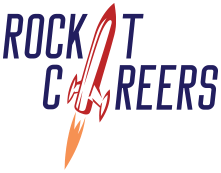“I don’t understand why I’m not getting any callbacks,” my client said, sliding his resume across the desk. As a career coach, I’ve heard this lament countless times. His experience was solid—a decade of leadership roles and quantifiable achievements—but his resume? It was a two-page block of text that could make the most seasoned recruiter’s eyes glaze over. Within minutes, I spotted the issues: no clear structure, buzzwords galore, and accomplishments buried under jargon. “Your resume isn’t just a document; it’s your first impression,” I told him. “And right now, it’s not showing the best version of you.”
That conversation isn’t unique. Many professionals—even highly accomplished ones—make simple mistakes that land their resumes in the dreaded circular file (or, in today’s digital world, the virtual “no” pile). The good news? Avoiding this fate is entirely possible with a little strategy and attention to detail. Here are some actionable tips to ensure your resume stands out for the right reasons:
1. Make It Easy to Read
Recruiters typically spend just 6-8 seconds scanning a resume before deciding whether to keep reading. Formatting matters:
-
Use a clean, professional font like Arial or Calibri.
-
Break up text with bullet points.
-
Ensure consistent spacing and margins.
A visually appealing resume invites recruiters to engage with the content rather than moving on to the next one.
2. Tailor It to the Role
One-size-fits-all resumes rarely work. Study the job description, identify keywords, and incorporate them naturally into your resume. Highlight relevant skills and experiences that directly align with the position—it shows you’ve done your homework and are genuinely interested.
3. Show, Don’t Tell
Avoid vague claims like “results-driven professional” without backing them up. Instead, focus on quantifiable achievements:
-
“Increased sales by 25% year-over-year.”
-
“Reduced operational costs by 15% through process improvements.”
Concrete examples resonate far more than overused buzzwords.
4. Ditch the Fluff
Recruiters don’t need to know about your “proficiency in Microsoft Office” (unless the role specifically calls for advanced Excel skills). Focus on skills and accomplishments that are impactful and relevant to the role.
5. Proofread. Then Proofread Again.
Typos and grammatical errors are instant deal-breakers. Use tools like Grammarly or have a trusted friend review your resume. Attention to detail in your resume reflects how you’ll approach your work.
6. Include a Strong Summary
Start with a concise, compelling professional summary at the top of your resume. It’s your elevator pitch in text form, giving recruiters a reason to keep reading.
7. Keep It Concise
Stick to one to two pages unless you have extensive experience that truly warrants more. Prioritize the most recent and relevant roles, and don’t be afraid to trim less impactful details.
8. Don’t Neglect the Digital Side
Many companies use Applicant Tracking Systems (ATS) to screen resumes. To ensure yours makes it through, use standard headings (e.g., “Work Experience”) and avoid graphics or unusual fonts that can confuse the software.
9. What Your Email Address Says About You
Your email address is a small but critical detail that can influence how you’re perceived. An unprofessional email (e.g., partygirl89@example.com) can leave the wrong impression. Additionally, if you have an email with birth year or the year you graduated from high school, you are letting the reader know your approximate age. In most cases, that doesn’t help your cause.
Instead, use a professional email address that includes your name, such as firstname.lastname@example.com. If your preferred address is unavailable, consider adding a professional descriptor, like john.smith.marketing@example.com. It’s a subtle but impactful way to convey professionalism.
The added benefit of having a new email address devoted to your job search is that emails sent to you won’t get lost in the plethora of email you likely get on a daily basis with the email you have right now.
So...Get to Work!
By the end of our session, my client’s resume had transformed. His accomplishments were front and center, the layout was inviting, and the content aligned perfectly with his target role. A few weeks later, he landed an interview—and ultimately, a new job.
Remember, your resume is your ticket to the next step in your career. By investing time in making it polished, focused, and relevant, you’re significantly increasing your chances of getting noticed—and avoiding the circular file altogether.

